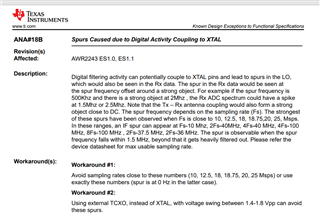Other Parts Discussed in Thread: AM2732, TIDA-020047, MMWAVE-MCUPLUS-SDK
Tool/software:
Dears,
The customer is using TIDA-020047 source files to manufacture the board, with main chips AM2732+AWR2243. There is an issue with cascading the two IC.
The detailed description of the problem can be found in the attached Word document


